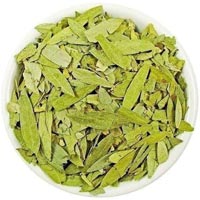
Among various modes of regimental therapies (Ilaj- bil- tadbeer), fasd (venesection) is one of the oldest medical techniques, having been practiced from very ancient times from peoples including the Egyptians, the Mesopotamians, and the Greeks. It is done for the withdrawal of blood from a patient’s punctured vein to cure or prevent illness or disease. For bloodletting an incision is made to superficial veins only. The main purpose is to create a balance in the humours by removing excess in it.
In this procedure, an incision is given to any of the superficial veins, and the blood, containing “Madda-e- faasida” (waste material) is allowed to flow outside the body. The purpose is evacuation of “Madda-e- faasida” (waste material) in order to maintain proper balance to maintain health.
Galen (Jalinoos) an eminent Unani scholar came out with a complex system to find out how much blood should be removed based on the patient’s age, his body constitution, season, weather condition and the place where fasd has to be performed.
In certain ailments venesection has been found very effective tool. It also been found very effective in treating certain lethal diseases. Some of the following useful applications of venesection are as follows.
It removes excess humours, abnormal humour or both present in the blood vessels.
Fasd is effectively applied for purification of vitiated humors in certain diseases like Sarsaam (Meningitis), Irqun Nisaa (Sciatica), Waja-ul- mafaasil (Rheumatic arthritis), Otitis, Menorrhagia, Subat, Coma, Niqras (Gout), Zaat-ur- riya (Pneumonia), Khunaaq-e- wabaai (Diphtheria), Bawaseer (Piles), Zaat-ul- janb (Pleurisy), Maalekholia (Melancholia), Nisyaan (Amnesia), Waja’-ul- qalb (Angina Pectoris).
It is also performed in cases of temporary unconsciousness or confusion (cerebral concussion) and skull fractures to prevent inflammation and oedema of the brain.
Instruments required for venesection (Fasd)
Antiseptic blade, lotion, tourniquet, scalpel with 11 No. cotton swab, sponge, bandage and kidney tray are mainly required at the time of fasd.
Objectives of Fasd (Venesection)
Maintenance of normal blood volume in the body to prevent the diseases occurring due to excessive blood volume.
To check the diseases such as Zaght-ud- dam qawi (hypertension), Kasrat-e-tams (menorrhagia) and Ru’af (epistaxis) as excess of blood in the body is one of the causes of these diseases. There are several diseases which can be cured by fasd (venesection). These include Humma-e- ejaamiya (malaria), splenic disorders, Bawaseer-e- damvi (haemorrhoids), Waram-e-khusiya (orchitis), Iltehab-e- raham (metritis), Jarb-o- hikka (scabies and pruritis), Khuraaj (boils), Iltehab-e- kabid (hepatitis) and Ehtebaas-e- tams (amenorrhoea), inflammation of anus, rectum and penis, eruptions, throat diseases and abscess, arthritis, sciatica, hip pain and gout.
To treat the ailments such as Aamraz-e jild (skin disorders) e.g. leucoderma, scabies, alopecia areata, Cardio-respiratory disorders, Nervous system disorders, Gynaecological disorders, Ophthalmic disorders.
Toxicity and accumulation of waste matters in blood can be checked and prevented by fasd (venesection) as it excretes the waste matters from blood and various parts of the body. Stimulation of metabolic processes (Metabolism).
References:
http://www.indianmedicine.nic.in/index4.asp?ssslid=137&subsubsublinkid=9&lang=1
http://www.ccrum.net/?s=regimental+therapy
http://www.tkdl.res.in/tkdl/LangDefault/Unani/Una_Regimental.asp
https://india.gov.in/gsearch?s=unani&op.x=0&op.y=0&op=Search
http://www.ccimindia.org/unani.html
http://jamiahamdard.edu/faculty-of-medicine/#
http://www.nium.in/facilities.php
http://www.ncbi.nlm.nih.gov/pmc/articles/PMC3377041/


